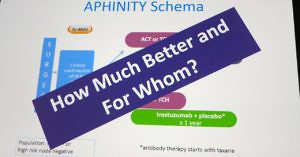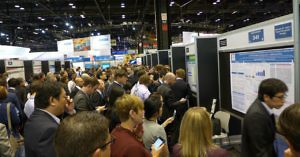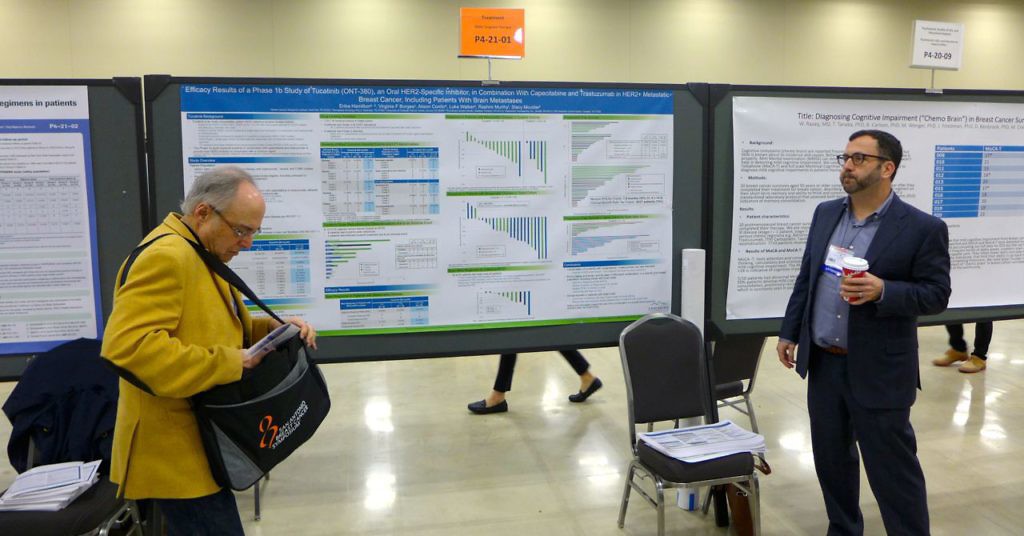It amuses me to realise that I’ve been writing about and following PARP inhibition since 2006 or so, when the field was in that twilight zone of early drug development between preclinical and clinical, thus just beginning to hit some sort of consciousness and broader interest in cancer research.
The AACR Molecular Targets meeting in 2009 was the first scientific meeting I covered as a science writer on the old Pharma Strategy Blog, which focused on early drug development from preclinical to phase 2 – after that I would rapidly lose interest and move on to the next new shiny scientific lure to research and discuss. No doubt this eager new writer ran about like an overenthusiastic little puppy in the poster halls chatting to scientists about their research, much to the amusement of the more staid press room, who at that time probably never ventured out of the darkened basement gloom.
In one of the press briefings there, I met an engaging and thoughtful scientist who was presenting his poster on PARP and synthetic lethality. He kindly took the time to explain in plain English a commonsense analogy that was most helpful for grasping complex concepts. Having sat through several long talks from luminaries in the field such as Drs Hillary Calvert and Alan Ashworth that covered double strand breaks and DNA repair mechanisms, it was a most welcome respite in the hurly burly of the conference!
Imagine his imagery…
You have a four legged coffee table or wooden chair and one of the legs breaks off or is damaged. The table remains standing, albeit less stable than before. Now a second leg breaks, and inevitably, the table is so unstable that it falls over.
Once you grasp that simple analogy for synthetic lethality, you have the basic idea of DNA double strand breaks and how inefficient repair can lead to vulnerabilities in the tumour that can be exploited.
The scientist I spoke to in Boston back in 2009 was Dr Mark O’Connor.
He was involved in DNA damage response research at a little known private company in Cambridge, UK called KuDos, who were subsequently acquired by AstraZeneca. Nearly a decade on and Dr O’Connor is still at the company; he now heads up their DNA damage response area.

Dr Mark O’Connor, AZN
With olaparib (Lynparza) since approved by the FDA in ovarian cancer and slated for the ASCO 2017 plenary session for HER2- breast cancer, things have certainly changed a lot since those early heady days of KuDos and the R&D journey has not been without its notable ups and downs along the way.
In Chicago earlier this month, I had the pleasure of catching up again with Dr O’Connor to learn more about the journey, and importantly, where things are going next. It’s quite an interesting roller coaster ride, to be sure!
To learn more, subscribers can log-in or you can purchase access to BSB Premium Content.
This content is restricted to subscribers
 The main focus of this year’s intrigue was the APHINITY trial where pertuzumab (Perjeta) was added to the standard of care treatment – trastuzumab (Herceptin) plus chemotherapy for one year – in HER2+ adjuvant breast cancer.
The main focus of this year’s intrigue was the APHINITY trial where pertuzumab (Perjeta) was added to the standard of care treatment – trastuzumab (Herceptin) plus chemotherapy for one year – in HER2+ adjuvant breast cancer.


 If there’s one topic that has generated a LOT of questions from BSB readers this month it is Puma Biotech’s neratinib in adjuvant breast cancer.
If there’s one topic that has generated a LOT of questions from BSB readers this month it is Puma Biotech’s neratinib in adjuvant breast cancer.


